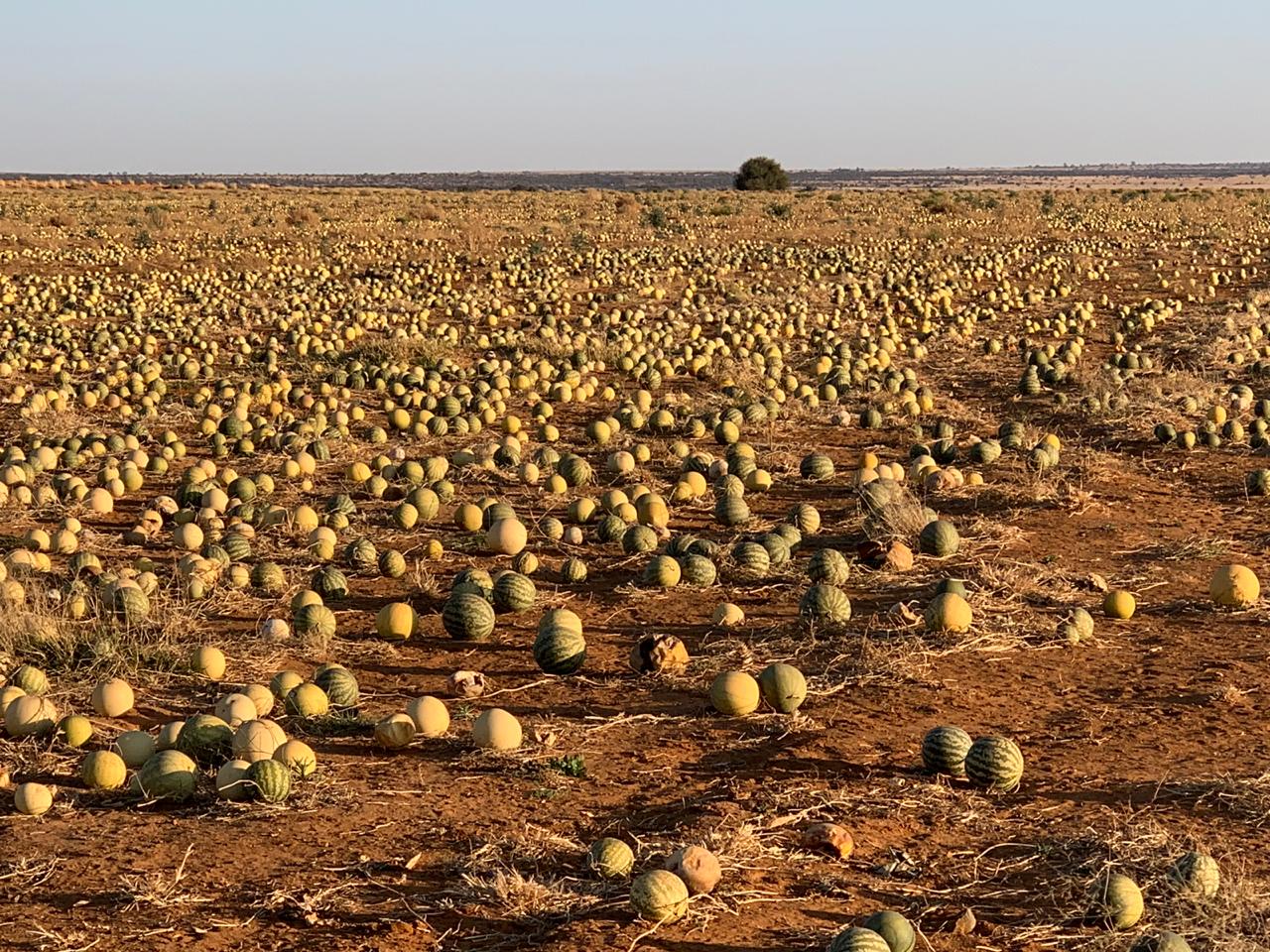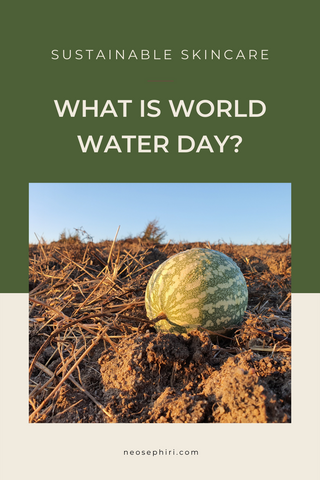WORLD WATER DAY: Time to play our part
Every year since 1992, March 22 marks World Water Day to highlight the importance of our most precious and increasingly scarce resource – safe, fresh water.
The United Nations (UN) created this day to mitigate the global water crisis and educate people about water scarcity. They have since incorporated the theme as one of their Sustainable Development Goals, to ‘ensure access to water and sanitation for all’.
This vital mission to protect and conserve safe water is something that runs through all spheres of our society. From government and NGO initiatives to responsible business, it trickles right down into our homes and ourselves every single day. We all have our part to play.

What is safe water?
While three-quarters of our Earth, is covered in water, only 3% is fresh water. And of that, only about 1.2% is our lifeblood - water that is clean and safe to drink or to use for hygiene. The other 1.8% is locked up in glaciers, ice caps and permafrost, or buried deep in the ground, according to National Geographic. 97% of the planet’s water is salty and cannot be used safely for survival without costly and energy-intensive desalination. Considering how precious and rare our accessible fresh, safe water is, we really shouldn't be taking it for granted.
Many of us lucky enough to have free access to clean, potable water use this rare and precious liquid without giving it much thought. We've become accustomed to it flowing out of our taps to drink, play in, water our gardens and keep ourselves, our pets and our environment clean.
Sadly, this isn’t the lived reality for nearly a quarter of the world’s population, who live without access to safe, clean water. The fact is that our population growth, human-induced climate change and loss of our natural, unspoiled habitats is only going to cause increased water scarcity. We’ve been warned about this coming event for the past few decades, but it has been viewed as something that could happen sometime in the future. The hard-to-swallow reality is that it is happening now.
Water scarcity right here, right now

In 2018, Cape Town, South Africa, almost experienced Day Zero – the term used to describe the day when dams would run dry completely. The city and its residents rallied with drastic water restrictions and managed to avert actual Day Zero, but it came far too close for comfort.
Luckily there was a reprieve, and subsequent years have brought good rains that have filled the dams. The Cape Town water crisis received plenty of attention and publicity at the time, but it was not an isolated incident, nor the first of its kind.
- In 2015, São Paulo, Brazil - one of the 10 most populous cities in the world - came within 20 days of exhausting their water supply.
- China is home to 20% of the world population, but only 7% of the world’s fresh water supply. Beijing has been identified as a water-scare city. There, in 2014, each of the 20 million inhabitants received only 145 cubic metres of water for the year – a mere 15% of the 1,000 cubic metre level set by the World Bank to signify ‘water scarcity’.
The inhabitants of these cities are all too aware that such water crises could happen again. And many still practice water-saving habits they adopted during the drought.
Unfortunately, other areas in the world are facing similar problems now, and the incidence of drought is increasing around the world. It's happening on all continents – only Antarctica remains untouched.
Even a lush and water-blessed country like England is feeling the impact. Water scarcity is identified as an existential threat, according to the UK’s Environmental Agency.
If there is an extended period of sunshine, water shortages become a reality because the country doesn't have the infrastructure to deal with the new climate realities of ‘hotter drier summers and less predictable rainfall’.
To make matters worse, our rapidly changing climate means that there are severe consequences in or after years of drought. Tinder-dry landscapes experience runaway fires, as is happening yearly in California, Texas and Australia. We’re also seeing tremendous flooding where the hard-baked earth is unable to absorb the rain.
Global action: Why is World Water Day important?
The UN uses World Water Day to raise ‘awareness of the 2.2 billion people living without access to safe water. A core focus is to support the achievement of water and sanitation for all by 2030.’
The focus for 2022: Groundwater!
Almost all our available fresh water comes from aquifers underground. It ‘feeds springs, rivers, lakes and wetlands, and seeps into oceans,’ the UN’s website explains.
The world’s arid areas rely entirely on groundwater, and life without it would be impossible. ‘Groundwater supplies a large proportion of the water we use for drinking, sanitation, food production and industrial processes,’ they say.
The challenges that a burgeoning global population and increased development results in a triple-whammy for our safe water sources:
- Over-exploitation, where more water is extracted than can be replaced via natural recharging through rain and snow melting
- Pollution of our water sources through industrial chemicals, seepage from garbage landfills, and so on, leaching into the system
- Drought triggered by rising temperatures and changing weather patterns is occurring through human-induced climate change
Our collective mission is to select the best solutions to protect our water quality and sustainable use as we meet the needs of our world population.

Business action: Making something out of a water-scarce resource
For Nêô Sephiri, water is of paramount importance. Our co-founder and chief scientist Bernard van Vuuren explains, ‘Water is our thing. We exist because of it. Or rather, lack of it, I should say. We’re making something in a dry part of the world with minimal water input. We've seen first-hand the impacts of the changing climate, with hotter weather and more persistent droughts becoming the new norm. The Kalahari melon is our way to mitigate against the effects of water scarcity. It’s a climate-change adaptation tool.’
Our farm is located on the fringes of the Kalahari in the Northwest of South Africa. Here we grow the melons from which we extract the nutrient-rich Nêô Sephiri Kalahari Melon seed oil.
In fact, Nêô Sephiri came about directly as a result of the worst drought in 80 years in this already arid region, as is explained in our origin story. ‘Ten years ago, in the midst of the drought, other traditional crops failed and were scorched by the sun. The only plant left standing was the Kalahari melon,’ Bernard explains.
Widely considered a weed by most farmers, the plant did exceptionally well in the harsh, arid conditions. Indeed, for thousands of years it provided the only natural source of water and nourishment for nomadic people and animals in the Kalahari. ‘This prompted us to investigate how it was able to survive in these extreme conditions. We were curious about the compounds contained in the melon that helped it to survive under these circumstances,’ Bernard continues.
The erratic, changing pattern of the climate was made evident by excessive rains over the last two summers – the most for over 40 years – which has been welcomed by many farmers but has also caused flooding and swarms of locusts to eviscerate what would have been bumper crops.

How do you produce a sustainable product in a climate of water scarcity?
Our co-founder Olga van Vuuren explains, ‘it’s all about the plant’s biology, and we recognised early on that the resilience of this melon and its ability to grow without the need for irrigation or much water at all was very special. And because of this, the Nêô Sephiri brand is all about minimal impact on water and the environment – specifically the ecosystem where we operate.
Personal action: What can we do?
If we live in a country or city that has access to plentiful water, it feels hard to relate to water scarcity. It helps to understand that we are all part of the greater system and the choices we make – no matter how small – all add up to a cumulative impact, whether for good or bad.
Some simple and easy ways we can save our water
- Not leaving the tap running when brushing teeth. Using a glass of water for rinsing.
- Collecting clean shower water that normally runs into the drain as we wait for the water to heat up, and using it to wash dishes, water the garden or wash cars.
- Catching so-called ‘grey water’ (water from bathroom sinks and tubs, showers and washing machines that’s been used) to water your garden and flush your toilet.
- Protect our water sources: keep streams and rivers clean and don’t litter (which ends up in our waterways).
- Put less garbage into the landfill system by choosing products with less or no packaging. Where you can, use biodegradable packaging and stop using single-use plastic. Opt for reusable bottles – preferably glass, as it’s biodegradable.
- Get there on a bicycle or public transport rather than a car, if you have the option.
- Support NGOs like Planet Water that provide clean water and hygiene education, by volunteering or donating to the cause. Their Project 24 initiative and AquaTower water filtration system provide many communities with clean, safe daily drinking water for up to 1800 people daily.
- Take a closer look at your daily habits and processes. The WWF has made an excellent, 90 second film that outlines the water requirements of a single cup of latte (200 litres!). It illustrates the water savings that are possible, and elsewhere applicable in our lives.
- Finally, when it comes to skincare, you may choose to opt for a ‘waterless’ product or brand, but be sure to also scrutinise the product’s wider water use – the packaging, the ingredients.
